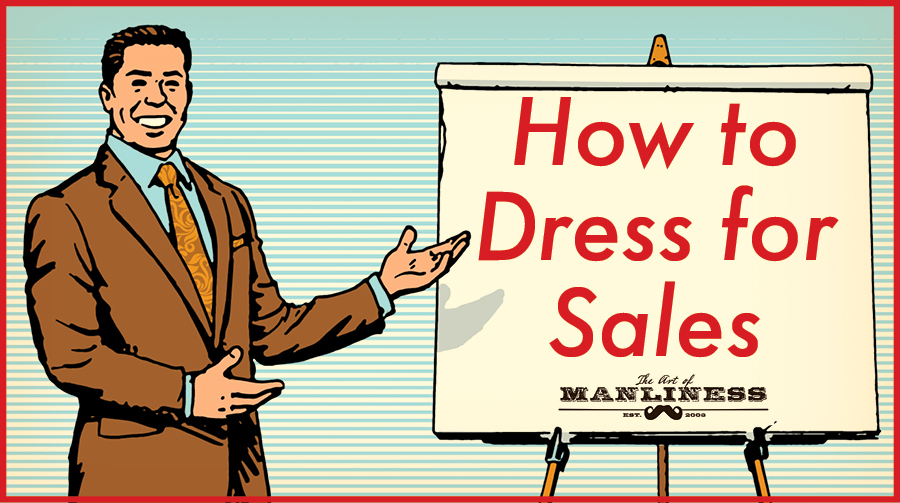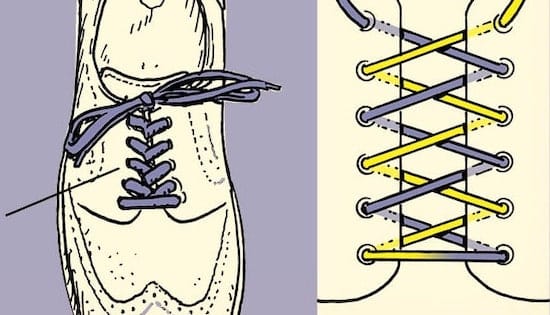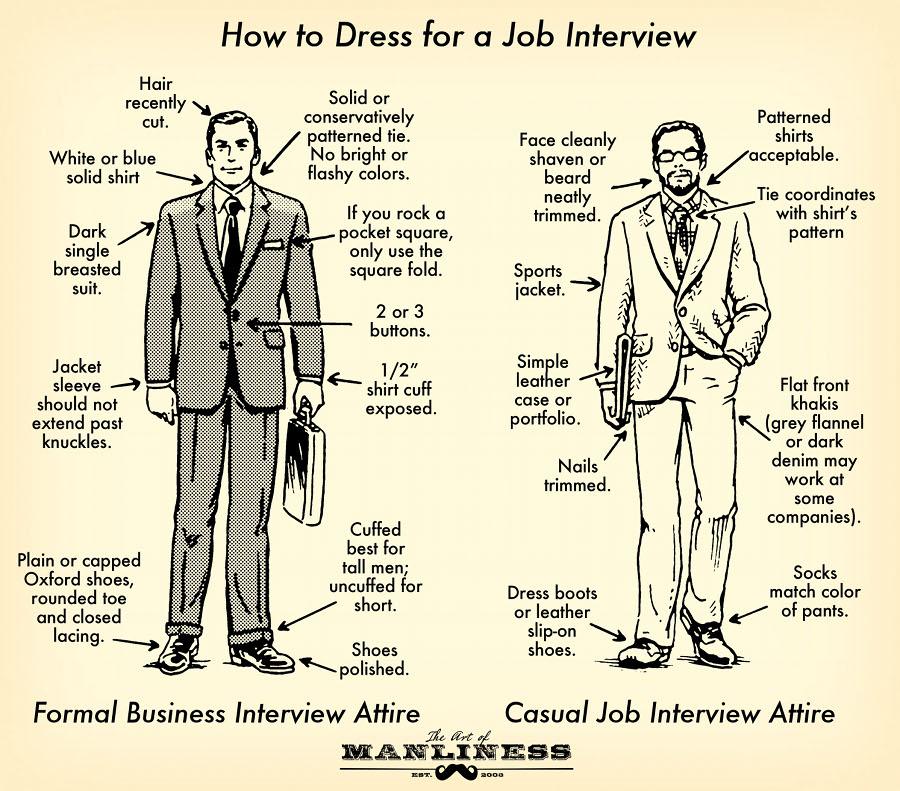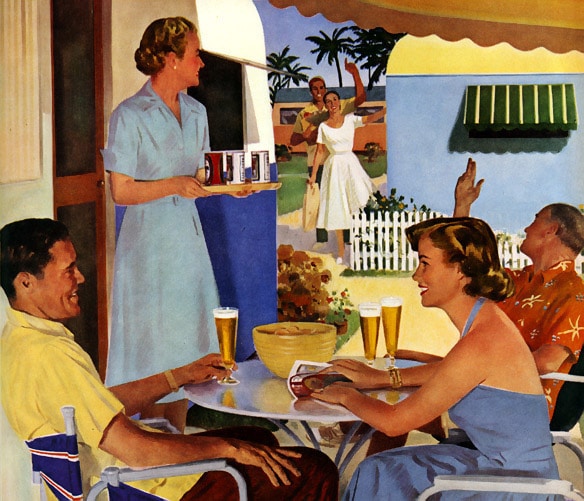
Style is a language: The clothing you wear speaks volumes about you long before you open your mouth, and talks to everyone around you, whether you actually exchange words or not. Research has conclusively shown that how you dress not only changes how you feel about yourself, but how others interact with you as well.
What you want your clothes to “say” depends on the situation and the impression you want to make. Sometimes you simply want your clothes to convey your personality and your general sense of ease.
Other times, you choose your clothes strategically, in order to create a certain effect — in order to give yourself a certain advantage. For example, you want to dress a certain way in order to convey power, or to be more effective in a negotiation.
Another time you want to dress strategically is when you’re in a sales situation — whether you’re selling in a traditional way day in and day out or will be stepping out of your normal job role to make a pitch. Whether you’re trying to get investors to buy in, introducing a new product, or simply trying to convince your coworkers of a new idea, you’re selling.
And when you’re selling, you’re never just pitching a product or an idea, but yourself as well; how you present yourself can make your pitch more or less convincing and compelling. Today we’ll thus unpack how to dress to be more effective in sales.
The Message: The 3 Things a Sales Outfit Should Say
This is an outfit designed to convey a message to potentially reluctant, indifferent, or outright hostile listeners:
- “You should hear my pitch.”
- “You like me and want to hear what I have to say.”
- “You can believe my claims.”
The sales outfit is worn when deals need to be closed. It has to be sturdy, convincing, and likable, and it often has to be able to play that role to many different people, as in the case of a door-to-door salesman (rare these days) or his corporate counterpart, the traveling sales rep (more commonplace).
The most obvious wearers of the style are of course those with a “salesman” title, as well as people who are pitching a service or idea: contractors, consultants, lobbyists, and even some clergy or missionary types.
1. “You Should Hear My Pitch” — How to Dress to Get Your Foot in the Door
Any experienced salesman will tell you that most of his sales are made or lost in the first thirty seconds. Your first impression counts big time when you’re making a pitch.
A good sales outfit is one that makes people want to listen to you. You do that by looking interesting and well turned-out — unique, but within the conventions of your environment, which usually means a business or business-casual look:
- Dress a couple notches up from the people you’re selling to. While a salesman should look friendly, he should also have a little authority, in the sense of having something that potential customers currently lack but want/need. So dress a little better than the people you’re selling to; if you’re selling to people in suits, you should also be in a suit. If you’re selling to the very casual/hip set, wear a sharp sports jacket and jeans. You’re not going to get very far if you underdress, especially if you’re dealing with corporate clients. Err on the side of overdressing.
- A good salesman never looks boring. Again, if you’re just like everyone else, you won’t come off as having something to offer that’s uniquely valuable. You want to evince just a bit of compelling panache. If you’re at a high-formality level where dark suits and conservative ties are a must, add a colored pocket square instead of a white one, or wear black brogued bluchers instead of plain oxfords, just to break the rules a tiny bit and get people’s eyes on you.
- That said, never break the rules too much. Black brogues or dress boots instead of oxford shoes is fine; canvas sneakers or light brown leather saddle shoes with a suit is not.
- Have something eye-catching in your outfit. A metallic lapel pin works wonders, and is also a potential way to slip in another message — if you’re selling drilling equipment to Texas oilmen, for example, a small Texas A&M pin is not a bad idea. (Of course, you’d then better have some connection to the Aggies — don’t be a phony; you’ll get found out sooner or later.)
- Don’t look pushy. Very sharply-silhouetted suits, power ties, ostentatious cufflinks and watches, and other aggressive styles will make people think you’re rude before you’ve had a chance to open your mouth. That judgment will then color everything you say.
It can be a delicate balancing act to be eye-catching and enticing without seeming gauche. When in doubt, stick to classic styles and let one or two small accents do the talking for you.
2. “You Like Me” — How to Dress for Instant Camaraderie
The key to the sales pitch is connection with your audience. You want to be someone who, quite simply, the target likes too much to disappoint. This is what entices them into making a deal without questioning whether it’s the best one they could get or not.
Likability is hard to project, but there are a few techniques we know to work:
- “Warm” colors and earth tones project more likability than “cool” colors or stark blacks and whites. A dark brown suit is more likable than a dark blue one; a red tie is more likable than a green one. Think about the places that are decorated to make us “happy” — fast food restaurants, circuses, etc. Then take those color palettes and mute them until you can wear them without being gaudy (burgundy instead of bright red, etc.).
- Wear things similar in style to your audience. We like people who are like us; who have the same kind of vibe/interest/culture. So let cues in your outfit align with the style of those you’re selling to. If you’re speaking with a hip, urban audience, wear leather dress boots; if addressing a rural, Western audience, wear cowboy boots. Only pick things that are already currently in your closet, though; that is, choose between items you already own to select pieces that will most resonate with your audience. If it’s not something you ordinarily wear, it won’t come off as “authentic.”
- People like a bit of patterned visual interest. Neckties with some eye-catching patterning like small crests or floral designs are great for establishing rapport — people feel “drawn” to them because of the visual interest, and then subconsciously associate that attraction with you. Similarly, a checked button-down under a sports jacket looks sharp and draws the viewer’s eye.
- Dress to flatter your body type. Personal attractiveness goes a long way in building instant positive feelings. Use a tailor to get a custom fit and ensure that there’s no loose cloth or tight bunching ruining your look.
The warmer other people’s feelings toward you, the more likely they’ll be to make decisions in your favor. Steer well clear of anything that seems stark or somber. No one buys from a salesman who looks like he’s going to a funeral, unless he happens to be selling coffins.
3. “You Can Believe My Claims” — How to Dress for Trustworthiness
Of course, no one buys from someone who looks like a snake oil salesman. You need to look reliable, and you need to not look like someone who’ll do anything or say anything to close a deal.
In practical terms, that mostly works out to the exercise of restraint. Don’t overdo your sales clothes to the point that people are noticing:
- A little texture is good; a lot of big patterning is not. Steer clear of plaids or bold stripes of any kind. They look too much like you’re leading a “mark” along, and plaid suits in particular have a deep cultural association with used car salesmen.
- An ostentatiously expensive suit is off-putting on several levels. Buy quality, but buy understated quality. A very high-quality flannel that drapes well is fine; a three-digit superfine that practically gleams it’s so smooth is overkill.
- Jewelry should be kept to a minimum. Men who wear overstated jewelry are usually assumed to be insincere.
- Get your little details right (shoes shined, shirt pressed, etc.). Missing any of the details shows that you’re really only dressing up because you have to, and you aren’t taking it seriously — again, an attitude that subconsciously tells people “he’s not sincere.”
The good salesman should always be pleasant to look at. People aren’t just buying a product or an idea, they’re buying a relationship and an experience. They want to sign on with someone who makes them feel good — and those good vibes start with how you dress.
_________________________________________
Written By Antonio Centeno
Founder, Real Men Real Style
Click here to grab my free ebooks on men’s style







